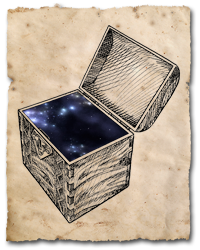What Is Dark Matter?
By Jennifer Ghandhi
 |
Is time travel possible? Perry Gerakines weighs science fact against science fiction in this exclusive online feature. |
Space is brimming with enormous masses of galaxies, supernovas, and stars, but something doesn’t add up. Despite its mind-boggling scale, the matter we can see accounts for only 4 percent of the total weight of the universe.
So where—and what—is the rest? No one knows for sure. Most of it seems to be a mysterious force called dark energy. But roughly 25 percent is attributed to something called dark matter—and astronomers are eager to find it.
Although dark matter’s makeup is a mystery, astronomers do at least know why it’s dark. “It’s unable to react through electromagnetism, which includes light,” says UAB physicist and astronomer Perry Gerakines, Ph.D. “It seems to interact only through gravity.” In other words, we know it exists because it exerts a gravitational pull on other celestial objects.
Top Theories
• Dark matter may consist of hydrogen gas clouds, brown dwarf stars, Jupiter-sized planets, or miniature black holes. The gravity connection points in this direction, but Gerakines says that scientists have found only limited amounts of such matter on the outskirts of our own galaxy—it is unlikely there is enough out there to approach 25 percent of the universe.
• Alternatively, dark matter may be made of neutrinos. These particles are created in nuclear reactions such as those in the core of the sun, but again, the number of neutrinos could explain only a small fraction of the total amount of dark matter.
• The most plausible candidates are “exotic particles,” says Gerakines, even though they have never been observed by scientists. Experiments at the new Large Hadron Collider (LHC) in Switzerland, which accelerates protons to 99 percent of the speed of light and crashes them into other protons traveling in the opposite direction, may prove the existence of these particles. “One way to figure out what something is made of is to smash it and look at the pieces that come out,” Gerakines explains. “The bits recombine into other things and leave interesting trails and tracks on the detectors.”
Anticipating Answers
Gerakines predicts that scientists eventually will explain dark matter, thanks to improved astronomical observations and experiments at the LHC and other sites. In fact, in December 2009 scientists reported finding traces of dark matter with a detector placed at the bottom of an abandoned iron mine in Minnesota. While that find has yet to be verified, “give it another 10 or 20 years, and we’ll probably have dark matter figured out,” Gerakines says.